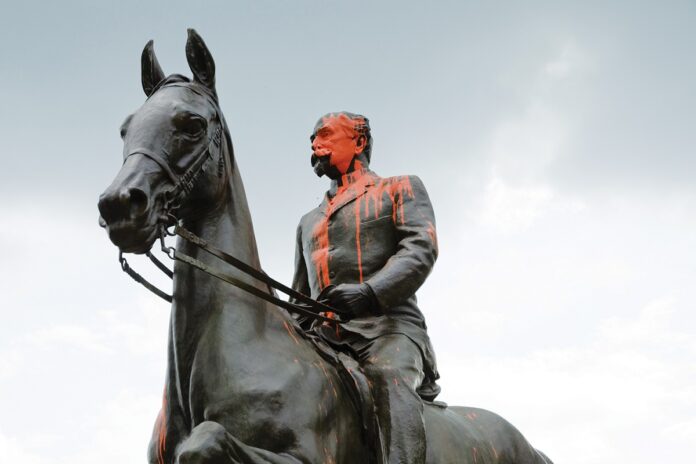Many years ago, I worked at a major-market television station that was steeped in history. In 1928, as one of the first television stations in the nation, the operation began transmitting in the new experimental medium of “radio picture broadcast”—a precursor to television. Four times a week, the station broadcast still photos. The technology was so new that only a handful of people had the receivers to view them.
In 1948, the station was awarded the first-ever affiliation contract with National Broadcasting Company (NBC). The pioneering broadcaster went on to become a well-regarded and influential powerhouse in the industry, known for its quantity and quality of local programming.
Back in the days we affectionately refer to as “Before Satellite”—or BS, for short—everyone who was anyone had to trudge through those studio doors and make a live, in-person visit if they wanted to promote their movie or book or concert or brand. And before they made their appearance, they waited in a small, pleasant room known as the “green room.”
With roots in live theater, a green room is the space that functions as the waiting area for performers before a show. At our television station, the walls were a pale tan and, most notably, they were adorned with the signatures of countless celebrities and historical figures who had waited within those four walls before stepping out in front of the cameras.
As time progressed, those walls became quite full of autographs, and one of the brighter bulbs in management thought it would be a good idea to paint over some of the lesser-known signatures to make room for new ones. After all, Pia Zadora was scheduled to make an appearance the following week, and there was scant room for her John Hancock.
The task of determining who should stay and who should go went to the most unlikely of people. While witty and warm, this particular man had little knowledge of history, and to him many of the old names on those tan walls were like ancient Greek.
With predictably disastrous results, he opened a can of the thick mixture and proceeded to cover up countless names that were unfamiliar to him. Goodbye Danny Kaye. Adios Roy Rogers. Au revoir Edgar Bergen and Charlie McCarthy. Your names were once legendary but, alas, no longer relevant to modern sensibilities.
As names are erased from our history, what effect does this have on our collective memories?
Lately, those on both sides of our nation’s red and blue divide have been repeating the phrase “those who cannot remember the past are condemned to repeat it.” The saying comes from the writings of George Santayana, a Spanish-born, American-raised philosopher and author of the late nineteenth and early twentieth centuries. The meaning of the phrase has been co-opted to support wars and political agendas, but most recently it was used by President Donald Trump to argue against the removal of statues and rechristening of military bases named for Confederate Civil War generals.
Trump’s Twitter message, in all caps, read “THOSE THAT DENY THEIR HISTORY ARE DOOMED TO REPEAT IT!”
Keeping the legacy of the Confederacy alive—from statues praising its military heroes to the brandishing of its rebel battle flag—is a glorification of our nation’s racist foundation and a painful sight for millions of Americans. Praising the Confederacy is no different from paying tribute to Germany’s Nazi past. Having recently visited Germany, I can attest to the fact the only “tributes” to the nation’s grotesque era are thoughtful lessons in history that do not avoid or minimize the brutal turths about the murderous fascist regime. You will not find statues of Adolph Hitler or Heinrich Himmler or Hermann Göring or Joseph Goebbels anywhere in public.
Yet, this example of how to deal with painful issues from the past is lost on our American leaders.
“Whatever else I may forget,” the ex-slave and abolitionist Frederick Douglass said, “I shall never forget the difference between those who fought for liberty and those who fought for slavery.” In his own time, Douglass was concerned the Civil War was being reframed as a fight over philosophical disagreements about states’ rights and not over the issue of slavery. In this retelling, neither side was right or wrong, and both Confederate and Union soldiers were to be celebrated for their battlefield valor. The revisionist version is simply untrue. According to the secession declarations drawn up by legislatures in all the states that would become the Confederacy, slavery was the central issue.
Nevertheless, the revisionist version is the one our current president espouses. At his golf course in Virginia a plaque between the fourteenth and fifteenth holes bears the following message:
“Many great American soldiers, both of the North and South, died at this spot. The casualties were so great that the water would turn red and thus became known as ‘The River of Blood.’ It is my great honor to have preserved this important section of the Potomac River!” —Donald John Trump
Putting aside the fact that no Civil War battles occurred at that location, Trump’s message is profoundly disturbing.
While the South lost the war, they won the battle over its memory, which is why there are hundreds of monuments to Confederate heroes throughout the former Confederacy. As Trump is prone to say, “there are good people on both sides.”
Joshua Zeitz, an author and American history scholar at Cambridge and Princeton Universities, wrote: “Tearing down the symbols of Nazi terror was a necessary first step—but it didn’t ensure overnight political or cultural transformation. It required a longer process of public reconciliation with history for Germans to acknowledge their shared responsibility for the legacy of Nazism… In continuing to honor Confederate leaders and deny their crimes, we signal that the United States has not yet fully come to terms with its collective responsibility for the dual sins of slavery and Jim Crow.”
Today, the outdated relics and tributes to the leaders who promoted racism must go. In doing so, we are not forgetting the past, but making amends for it.
Perhaps, like the German people, we should replace the statues of Robert E. Lee with memorials to the countless slaves who were denied basic human rights. Instead of a Confederate flag, let’s fly a tribute to those who were lynched, murdered, or beaten because of the color of their skin.
Until we come to terms with the fact our nation’s past is steeped in ugly racism, we will never move beyond it nor be able to create a country where everyone—regardless of race, color, orientation, or beliefs—truly is equal.
Sorry, Donald. Our nation’s past, as you like to see it, misquote it, and praise it, embodies a glorification of racism. Perhaps that is why “Make America Great Again” is so repugnant to millions of people.
And that’s why on election day, I hope everyone remembers the message you so uneloquently tried to usurp: “Those who cannot remember the past are condemned to repeat it.”
Keep that in mind as you approach the ballot box.
 Randall Huft is president and creative director at Innovation Agency, an advertising, branding, and public relations firm specializing in the cannabis industry. While working with blue-chip companies including AT&T, United Airlines, IBM, Walgreens, American Express, Toyota, and Disney, he discovered what works, what doesn’t, and how to gain market share.
Randall Huft is president and creative director at Innovation Agency, an advertising, branding, and public relations firm specializing in the cannabis industry. While working with blue-chip companies including AT&T, United Airlines, IBM, Walgreens, American Express, Toyota, and Disney, he discovered what works, what doesn’t, and how to gain market share.


